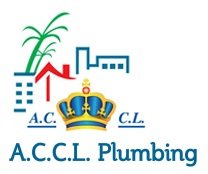The plumbing industry is subject to a complex array of regulations and standards that govern the design, installation, and maintenance of plumbing systems. These regulations and standards are designed to ensure the safety, quality, and efficiency of plumbing systems, protecting public health and the environment. In this article, we’ll explore the key regulations and standards that govern the plumbing industry.
Regulations and Standards
1. Building Codes: Local and national building codes, such as the International Plumbing Code (IPC) and the Uniform Plumbing Code (UPC), provide detailed requirements for plumbing system design, installation, and maintenance.
2. Health and Safety Regulations: Regulations like the Safe Drinking Water Act and the Occupational Safety and Health Act (OSHA) ensure that plumbing systems are designed and installed to protect public health and worker safety.
3. Environmental Regulations: Regulations like the Clean Water Act and the Environmental Protection Agency (EPA) guidelines govern the use of plumbing systems and materials to prevent water pollution and protect the environment.
4. Product Standards: Standards like those set by the American Society of Mechanical Engineers (ASME) and the American National Standards Institute (ANSI) ensure that plumbing products meet minimum safety and performance requirements.
5. Certification and Licensing: Many jurisdictions require plumbers to be certified or licensed to work on plumbing systems, ensuring that they have the necessary knowledge and skills to perform their job safely and effectively.
Importance of Compliance
Compliance with plumbing regulations and standards is crucial to:
1. Protect Public Health: Properly designed and installed plumbing systems prevent the spread of waterborne diseases and ensure access to safe drinking water.
2. Ensure Safety: Compliance with regulations and standards helps prevent accidents, injuries, and fatalities caused by faulty plumbing systems.
3. Prevent Water Waste: Efficient plumbing systems conserve water and reduce waste, protecting this valuable resource for future generations.
4. Reduce Liability: Compliance with regulations and standards can reduce liability for plumbing professionals and building owners in the event of a plumbing-related incident.
Best Practices for Compliance
1. Stay Up-to-Date with Regulations: Regularly review and update knowledge of plumbing regulations and standards to ensure compliance.
2. Follow Industry Guidelines: Adhere to industry guidelines and best practices for plumbing system design, installation, and maintenance.
3. Use Certified Products: Specify and install products that meet relevant standards and certifications.
4. Train and Certify Personnel: Ensure that plumbing professionals are properly trained and certified to perform their job safely and effectively.
Conclusion
Plumbing industry regulations and standards play a critical role in ensuring the safety, quality, and efficiency of plumbing systems. By understanding and complying with these regulations and standards, plumbing professionals can protect public health, prevent accidents, and reduce liability. As the plumbing industry continues to evolve, it’s essential to stay informed about changing regulations and standards to ensure compliance and provide high-quality services.

